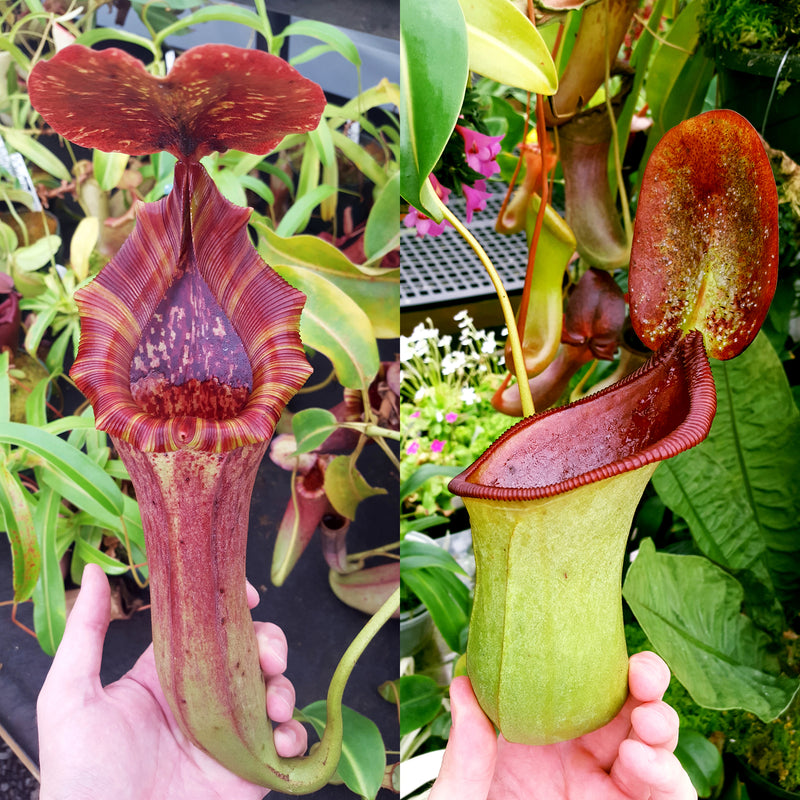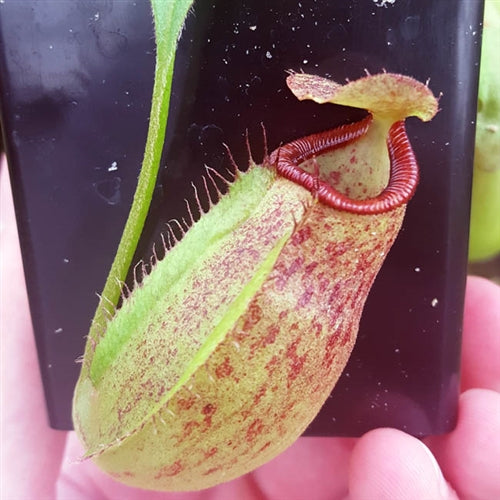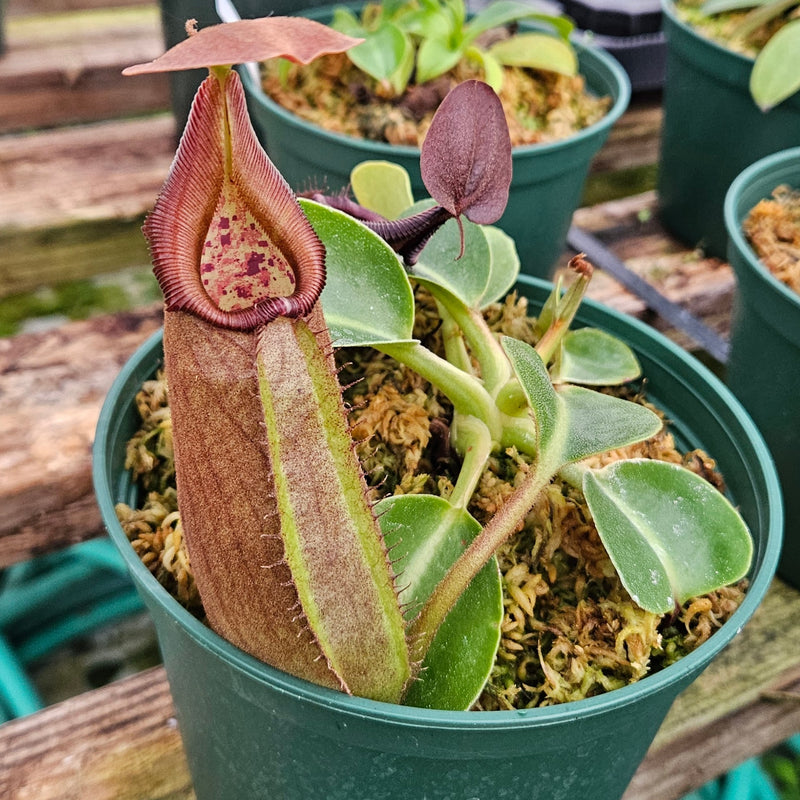
In-House Creations
The Nepenthes breeding program at Predatory Plants is the largest source for seed-grown Nepenthes in the United States. Starting with the production of N. Maiden of Victory (N. maxima x ventricosa) in 2014, our stable has produced thousands of plants, including pure species, new primary hybrids, and some very exciting complex crosses. Serious collectors can find all sorts of exciting new tropical pitcher plants available exclusively from Predatory Plants. We've also developed a unique naming system, so that collectors can easily see the relationship between breeding stock and offspring. You can learn more about our naming system HERE.
Size Guide
Extra Small
< 2" leaf span
Small
~2-3" leaf span
Medium
~3-6" leaf span
Large
~6-12" leaf span
Filter By
Sort By

Nepenthes Titanic Savior
From $19.99

Nepenthes Lovely Beast
From $19.99

Nepenthes Titanic Triumph
From $24.19

Nepenthes Jolly Sculpture
From $34.99

Nepenthes Stoic Mirror
From $19.99

Nepenthes Talented Tower
From $19.99

Nepenthes Regal Vortex
From $29.99

Nepenthes Stoic Rampage
From $19.99

Nepenthes Vital Beast
From $29.99

Nepenthes Furious Triumph
$24.99
$14.99

Nepenthes Stoic Triumph
From $14.99

Nepenthes Stoic Sin
From $19.99

Nepenthes Regal Tower
$49.99
$34.99

Nepenthes Prince of Battle
$34.99
$24.99

Nepenthes Valiant Battle
From $34.99

Nepenthes Talented Triumph
From $19.99
Want to know more about our in-house creations?
Learn More
The process of breeding Nepenthes is very exacting. All Nepenthes are dioecious, which means they produce either male or female flowers. Thus you always need two plants of matching sexes to flower simultaneously, which is made all the more difficult because each species/clone is on its own blooming cycle. Some, like Nepenthes "Titan", our famous female N. truncata, flower every 6 months like clockwork. Others, like N. "Lust", our male N. lavicola, have only flowered twice in 5 years. This means that we have to respond to the plants, and plan years in advance if we hope to achieve a specific hybrid.
Once flowers have been pollinated and seed has been produced there is a long, delicate process of raising salable plants from seed. All of our procedures have been developed in-house, and we've shared a lot of what we've learned in our Ultimate Nepenthes Seed Guide. It takes anywhere from 1-3 years to bring a plant to market from sowing seed, and up to 6 years to see fully mature characteristics. Every new seed set is an exciting experience!
The goals of our breeding program are threefold. First, to produce pure horticultural species whenever possible, so as to alleviate the wild-collection pressure on threatened plants. So far we've achieved this with several species, including N. ventricosa, N. truncata, and N. veitchii, and we have several more in the works. Second, to create novel primary hybrids and recreate classic crosses such as N. "Predator" (N. truncata x hamata), which have been unavailable for years. Third, to create and identify highly select clones from complex crosses/back crosses in order to create brand new mass-market and collector offerings.
Our grex nomenclature assists us in these goals by helping us organize our breeding program, and also by creating memorable epithets that help people get excited about new hybrids. More information about our naming system can be found at the grex information page.
Once flowers have been pollinated and seed has been produced there is a long, delicate process of raising salable plants from seed. All of our procedures have been developed in-house, and we've shared a lot of what we've learned in our Ultimate Nepenthes Seed Guide. It takes anywhere from 1-3 years to bring a plant to market from sowing seed, and up to 6 years to see fully mature characteristics. Every new seed set is an exciting experience!
The goals of our breeding program are threefold. First, to produce pure horticultural species whenever possible, so as to alleviate the wild-collection pressure on threatened plants. So far we've achieved this with several species, including N. ventricosa, N. truncata, and N. veitchii, and we have several more in the works. Second, to create novel primary hybrids and recreate classic crosses such as N. "Predator" (N. truncata x hamata), which have been unavailable for years. Third, to create and identify highly select clones from complex crosses/back crosses in order to create brand new mass-market and collector offerings.
Our grex nomenclature assists us in these goals by helping us organize our breeding program, and also by creating memorable epithets that help people get excited about new hybrids. More information about our naming system can be found at the grex information page.
Catch the latest on promotions, new products and sales.




 Visit Our Store
Visit Our Store
 Contact Us
Contact Us
